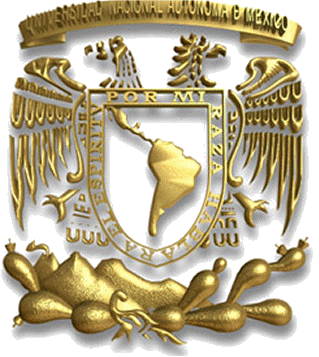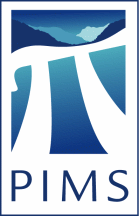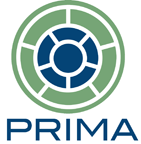Abstracts of Talks and Minicourses
Geometry, Topology, and their Interactions.
Invited Talks
- Orbifolds and cohomology of groups, Alejandro Adem (University of British Columbia, Canada)
We will discuss cohomological computations for
toroidal orbifolds and how they relate to questions
about group cohomology.
- Curvature vs Curvature operator, C. S. Aravinda (Chennai Mathematical Institute, India)
We discuss, with examples and results, the interplay between
geometry and topology of complete riemannian manifolds under
various signature conditions on the sectional curvature and
curvature operator of the metric.
- Hyperbolicity and rigidity for hyperplane complements, Igor Belegradek (Georgia Tech)
In this talk a "hyperplane complement" is the complement of
a closed totally geodesic submanifold of codimension 2 in a
compact real or complex hyperbolic manifold. The main result
is the Mostow-type rigidity: if two hyperplane complements
are homotopy eqiuvalent, then they are isometric. A key step
in the proof is showing that hyperplane complements have
relatively hyperbolic fundamental groups.
- On spaces of homomorphisms, Fred Cohen (University of Rochester)
The purpose of this lecture is to describe topological
properties of spaces of homomorphisms Hom(\pi,G) together with certain
elements in the space of representations. The group G is assumed to be a
Lie group, not necessarily compact, and \pi is a discrete group.
This lecture is based on two joint projects with Alex Adem and
Stratos Prassidis.
- Volume and smooth rigidity of negatively curved manifolds, Chris Connell (Indiana University)
- On the work of Tom Farrell and Lowell Jones, Frank Connolly (University of Notre Dame)
- L^2 cohomology of hyperplane complements, Mike Davis (Ohio State University)
- Intersection forms, fundamental groups, and smooth 4-manifolds, Ian Hambleton (McMaster University, Canada)
Any finitely presented group G can be realized as the fundamental
group of a closed, smooth 4-manifold M. What can be said about the
Z[G]-valued intersection form on pi_2(M) ? If the module \pi_2(M)
is a free \pi_1(M)-module, as is the case when \pi_1(M)=Z,
then one can ask if the intersection form must be induced by tensor
product from an ordinary symmetric bilinear form over Z. In this
talk I will present some recent work on this question with Stefan
Friedl, Paul Melvin and Peter Teichner.
- Looking for the best orthogonal almost-complex structure on a compact Riemannian
manifold, Luis Hernandez (CIMAT, Mexico)
- Local similarities and the Haagerup property, Bruce Hughes (Vanderbilt University)
I will introduce a new class of groups - finitely determined
groups of local similarities on a compact ultrametric space -
and prove that they have the Haagerup property (that is, they
are a-T-menable in the sense of Gromov).
The class includes Thompson's groups, which have already
been shown to have the Haagerup property by Dan Farley.
- Asymptotic geometry and compactifications for linear groups and
mapping class groups, Lizhen Ji (University of Michigan)
- On the calculation of UNil for finite groups, Qayum Khan (Vanderbilt University)
Let F be a finite group, and let D be the infinite dihedral group.
Consider virtually cyclic groups V that are trivial group extensions 1
--> F --> V --> D --> 1. For F=1, the calculation of UNil(1) was
completed recently by Banagl, Connolly, Davis, and Ranicki. If F
contains a normal abelian Sylow 2-subgroup S, we discuss a reduction
theorem for UNil(F) in terms of UNil(S). A corollary is that, if F has
odd order, then UNil(F) is isomorphic to UNil(1).
- Trees and mapping class groups, Chris Leininger (University of Illinois - Urbana-Champaign)
There is a forgetful map from the mapping class group of a
punctured surface to that of the surface with one fewer puncture. We
relate the action of the kernel on the curve complex to a family of
actions on trees. Together with a geometric compactness argument we
further prove that finitely generated purely pseudo-Anosov subgroups of
the kernel are convex cocompact in the sense of Farb and Mosher. As a
corollary, this answers their question of local convex cocompactness for
Whittlesey's group.
- L^2-Betti numbers and the Atiyah conjecture, Peter Linnell (Virginia Tech)
I will survey some results on the Atiyah conjecture and its relation
to L^2-Betti numbers and embeddings of group rings into Artinian
rings. There are various versions of the Atiyah conjecture; here is
one of them. Let N(G) denote the group von Neumann algebra of the
group G. There is a well defined dimension dim_{N(G)} associated
to every N(G)-module, which is either a non-negative real number or
infinity. Suppose G is a group for which the finite subgroups have
bounded order and d is the least common multiple of the finite
subgroups. Then one version of the Atiyah conjecture states that
d(dim_{N(G)} M) is either an integer or infinity for every CG-module
M. This implies that CG is embeddable in a semisimple Artinian
ring. The case G is a congruence subgroup (groups of matrices
congruent to the identity matrix modulo some prime) will especially
be considered.
- p-compact local groups, Bob Oliver (Universite de Paris - XIII, France)
- The Farrell-Jones Conjecture as a tool for computations
in K-theory, Ivonne Ortiz (Miami University)
The talk is a report on joint work with Jean-Francois Lafont on the lower
algebraic K-theory of certain relatively hyperbolic groups.
Part of these computations involve calculating certain Waldhausen
Nil-groups for Z[D_2], Z[D_3].
- Smoothing p-compact groups, Erik Pedersen (Binghamton University)
- Products and transfers in controlled K-theory, Frank Quinn (Virginia Tech)
I'll describe a version of controlled K-theory in which products and
transfers can be described explicitly. This should have applications
to splitting obstructions and the Farrell-Jones conjecture, among
other things.
- Algebraic K-theory of hyperbolic groups, Holger Reich (University of Muenster, Germany)
The talk reports on joint work with Arthur Bartels and Wolfgang Lueck.
We prove the K-theoretic Farrell-Jones conjecture for hyperbolic
groups and more generally for subgroups of finite direct products of
hyperbolic groups.
- Collapsing construction with nilpotent structures, Xiaochun Rong (Rutgers University)
- Geometry and topology of locally
symmetric spaces, Les Saper (Duke University)
- Blocking light in compact Riemannian manifolds, Ben Schmidt (University of Chicago)
To what extent does the intersection of geodesics determine
a Riemannian metric? I'll discuss conjectures asserting that flat
spaces and compact rank one symmetric spaces are characterizable in
terms of collision properties of geodesics. Based on joint work with
Jean Lafont and Juan Souto.
- Foliated projective structures on the unit tangent
bundle of a Riemann surface, Anna Wienhard (University of Chicago)
We all know that the Teichmueller space of a Riemann
surface S can be described as the moduli space of various geometric
structures (e.g. hyperbolic structures or complex structures) on S. There
are higher Teichmueller components defined by Hitchin as connected
components of the space of representations of the fundamental group of S
into PSL(n,R). For PSL(3,R) Goldman and Choi showed that this Teichmueller
component is the moduli space of convex projective structures on S. In my
talk I will explain joint work with O. Guichard showing that the
Teichmueller component for PSL(4,R) is the moduli space of certain convex
foliated projective structures on the unit tangent bundle of S.
- SL(3,Z[t]) and SL(2,Z[t,1/t]) are not FP_2, Kevin Wortman (Yale University)
I'll speak on joint work with Kai-Uwe Bux in using the geometry
of Euclidean buildings to determine the finiteness properties from the
title.
- Group action on Banach spaces
and K-theory, Guoliang Yu (Vanderbilt University)
Minicourses
- Introduction to high dimensional topology, Jim Davis (Indiana University)
These lectures will cover the basics of high-dimensional manifold
theory from the 1960's through the present day. Topics:
(1) Smooth, PL, and, topological manifolds, and Poincare complexes
and their corresponding bundle theories. The structure set of a
manifold.
(2) Poincare Conjecture, Exotic Spheres, Borel Conjecture.
(3) Browder's splitting theorems, surgery theory and L-theory, non-
simply connected splitting theorems.
(4) Virtually cyclic groups; Farrell-Jones Isomorphism Conjectures.
- Introduction to geometric group theory for topologists, Jean-Francois Lafont (Ohio State University)
In these lectures, I will introduce the basic ideas of geometric group theory,
with a focus on results that have applications to topology. The emphasis will be on
illustrative examples, with some sketches of proofs. Some specific topics
that will be covered include:
(1) basic notions on hyperbolic groups and CAT(0)-groups, quasi-isometries, classification
results, overview of central results in geometric group theory,
(2) models for the classifying space with isotropy in finite subgroups, finiteness
properties, applications to computing lower algebraic K-theory,
(3) equivariant compactifications of the classifying space, relevance to the Novikov
conjecture.
- Introduction to Controlled Topology and its Applications, Stratos Prassidis (Canisius College)
In these lectures, I will present the basic constructions, theorems
and applications of controlled topology. Controlled topology is topology
"over a space", where all the constructions (functions, homotopies, chains)
are measured at the base space. The basics of this approach have been
established by Quinn, Chapman and Ferry. The underlying idea is that if
certain obstructions are "small enough" when measured in the appropriate
control space, then they vanish.
More specifically, I will cover the following topics:
(1) Review of the algebraic and geometric definition of the algberaic
K-theory of spaces. Siebenmann's End Theorem and s-cobordism theorem.
(2) Definition of controlled K-theory and its basic properties.
(3) Approximate fibrations and Sucking Principle. Thin h-cobordism
theorem and $\alpha$-approximation theorem. Applications.
(4) A controlled approach to the Bass-Heller-Swan Formula and to
Farrell's Fibering Theorem.





